Disclaimer: This post is not sponsored in any way. Everything we’ve shared here reflects our genuine opinions and personal experiences during our trip. We paid for the course and all associated expenses ourselves, and our recommendations are based solely on what we loved about Moalboal, Amigos Dive Center, and the incredible journey of becoming certified divers.
One of the first adventures Jess and I had planned for our trip to the Philippines was earning our Open Water PADI certification. Scuba diving had always intrigued us, and we’d heard glowing recommendations about the Philippines as one of the best diving destinations in the world. From vibrant marine life to crystal-clear waters, the underwater world here seemed to offer everything a diver could dream of. Additionally, with future plans to visit other renowned diving locations, we knew getting certified here would open up countless opportunities for exploration.
After doing some research, we zeroed in on Moalboal, a charming coastal town on Cebu Island. Not only was it renowned for its sardine run and incredible coral reefs, but it was also one of the most affordable places globally to complete the Open Water PADI course, which costs 18,500 PHP. For budget-conscious travelers like us, this was a major draw. With our decision made, we booked our flight to Cebu City and planned our journey to Moalboal, eager to dive into this new adventure—literally.
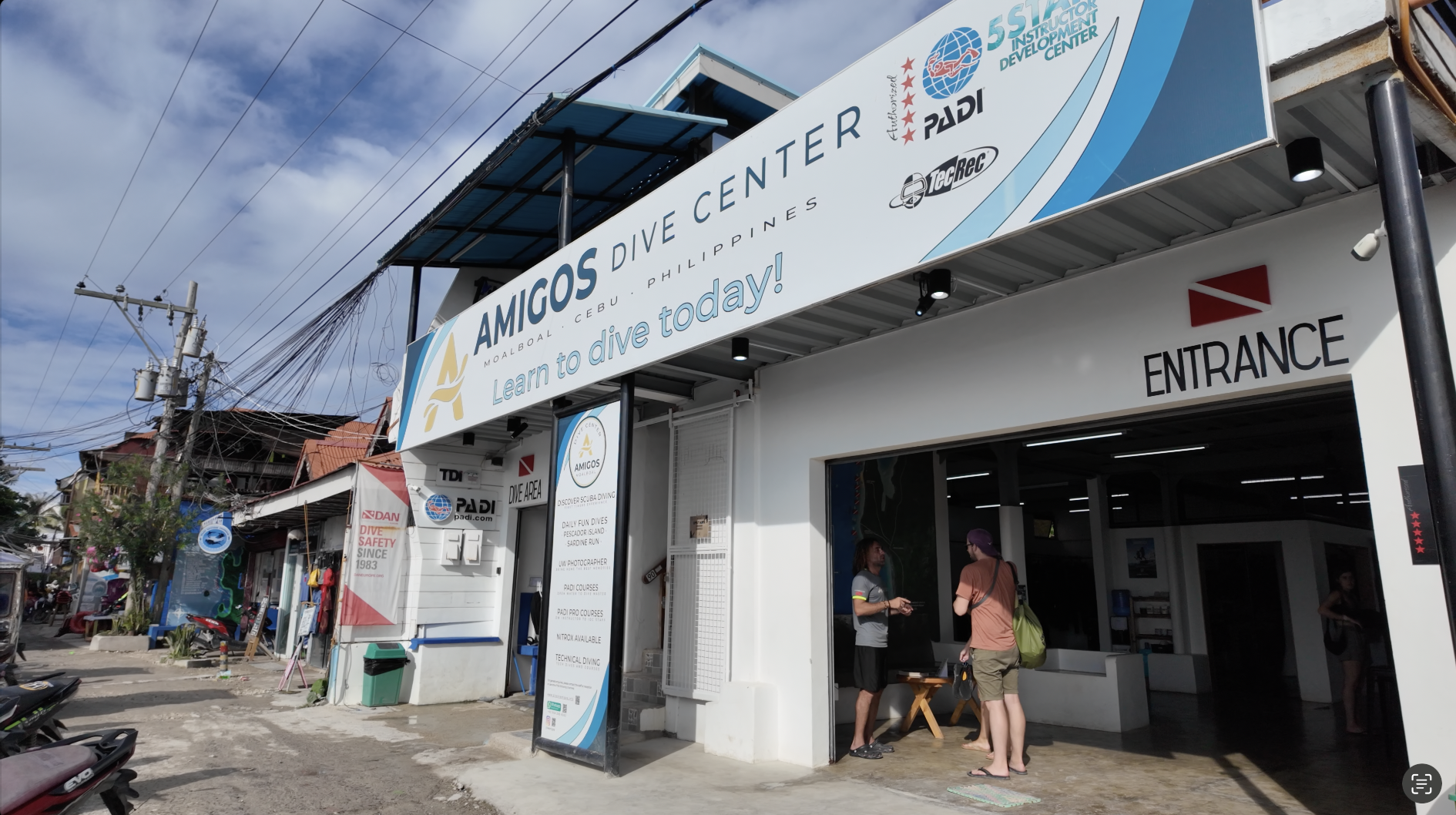
Choosing Amigos Dive Center
Upon arriving in Moalboal, we wasted no time and headed straight to Amigos Dive Center, a well-reviewed dive shop that stood out during our pre-trip research. Amigos had built a stellar reputation for offering comprehensive and affordable dive courses without compromising on quality. Their glowing reviews highlighted not just their competitive rates but also the professionalism and friendliness of their staff.
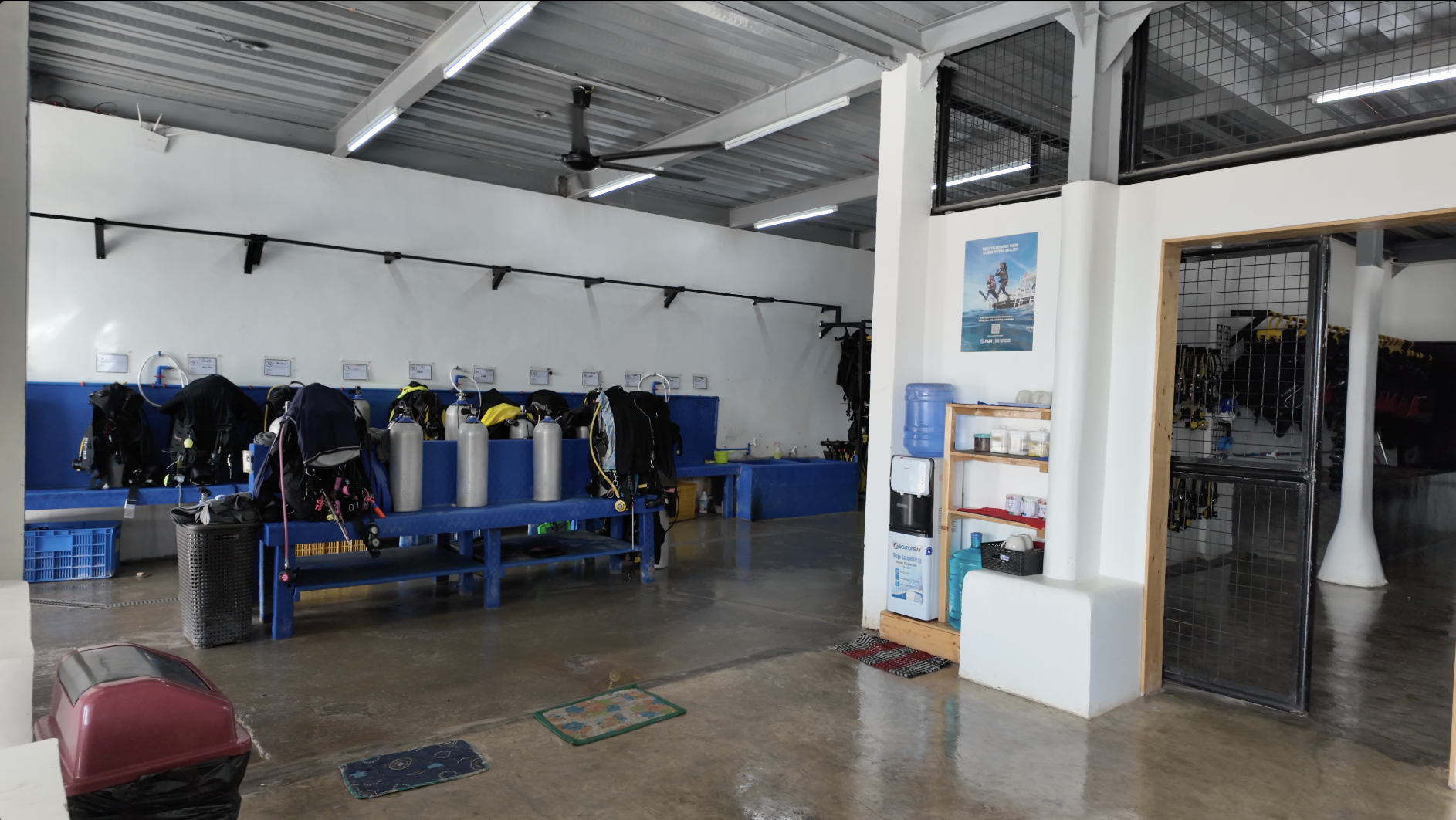
The shop itself was a short, scenic 10-minute walk from Moalboal’s main street. As we entered, we were greeted by a warm and approachable staff member who immediately made us feel welcome. We expressed our interest in starting the Open Water PADI course, and she explained the process. A deposit of 5,000 PHP per person was required to secure our spots, which we promptly paid using a credit card, incurring a 5% additional charge. With our 10,000 PHP payment made, we were officially enrolled and ready to start the very next day.
That evening, we received an email with access to the e-learning portion of the course. The e-learning covered foundational diving knowledge, such as understanding equipment, diving skills, and safety protocols. We were instructed to complete the first section, which would prepare us for the practical training that started the following morning.
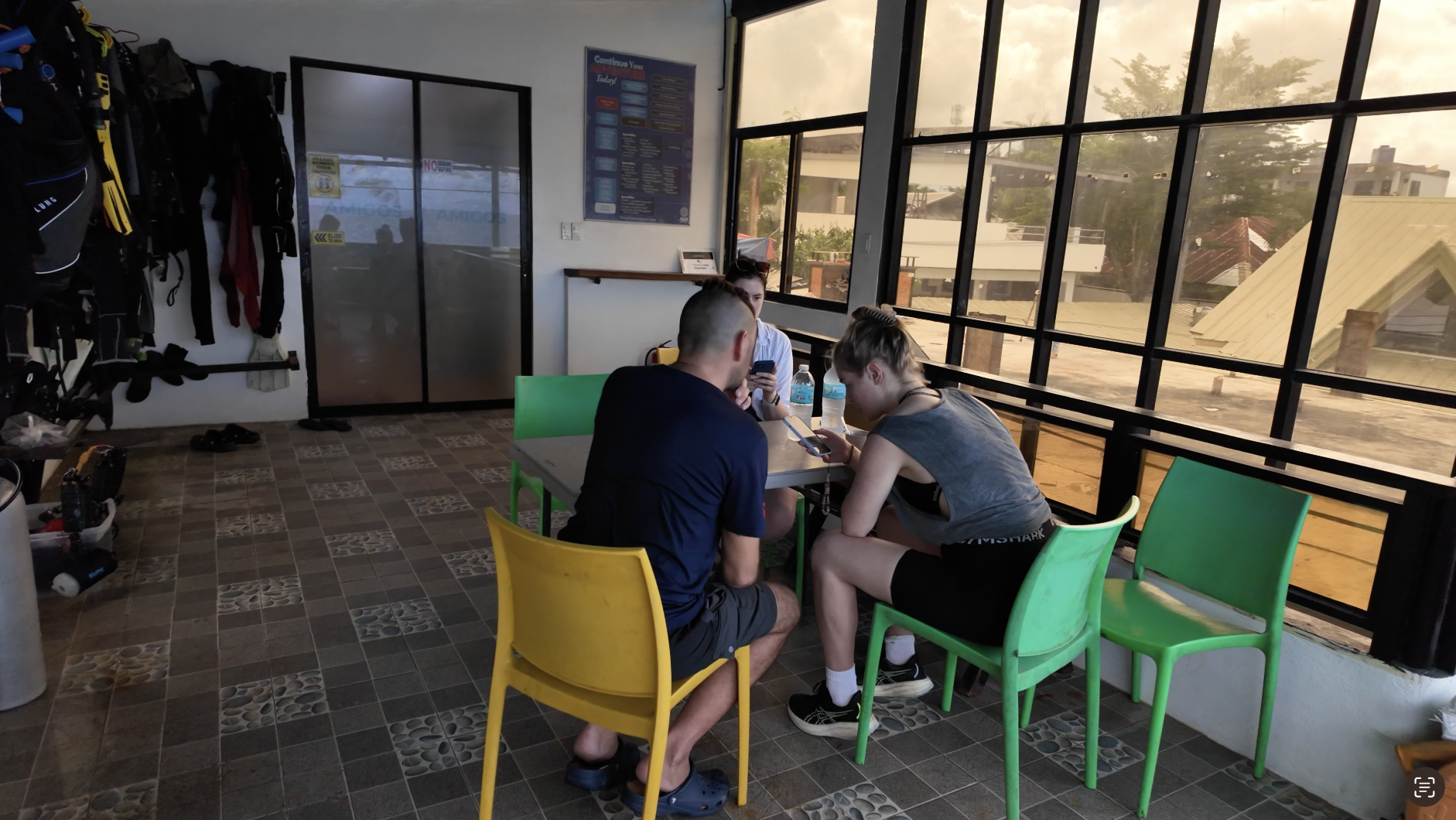
Starting the E-Learning Portion
Diving is as much about knowledge as it is about skill, and the e-learning portion of the PADI course is designed to build a strong foundation before getting in the water. The coursework introduced us to key topics like:
- Being a Diver I: An overview of diving as a recreational activity.
- Equipment I: A detailed introduction to scuba gear, its functions, and proper use.
- Your Skills as a Diver I: Essential skills needed to dive safely and confidently.
- Knowledge Review One: A summary and review of the material.
- Quiz One: A short test to reinforce what we’d learned.
Jess and I initially spent 3–4 hours working through the material that night. At first, we meticulously read through each section, but the volume of information felt overwhelming. The next morning, our instructor, Markus, reassured us by advising us to focus on completing the knowledge reviews and quizzes rather than memorizing every detail. He emphasized that the hands-on training would cover all the critical skills and that any gaps in understanding could be addressed during in-person sessions.
With this advice, we streamlined our study process and completed the remaining three modules in under two hours. By the time we finished, we felt confident and ready to begin the ocean practical portion of the course.

Day 1: Pool Training
Our first day of in-water training began with an orientation at Amigos Dive Center. Here, we met Markus, our instructor, a seasoned German dive master brought in to support the high demand for courses. Markus had a calm, patient demeanor that immediately put us at ease. His teaching style was methodical and thorough, ensuring that no detail was overlooked and that every student fully understood each concept before moving forward.
The morning started with a detailed introduction to scuba equipment. We learned how to assemble, test, and wear our gear, including wetsuits, Buoyancy Control Devices (BCDs), regulators, weight belts, and gauges. Markus walked us through every step, emphasizing safety and proper technique. After an hour of preparation, we headed to the pool at One Piece Bistro, a local restaurant owned by Amigos.
In the shallow 4-foot section of the pool, we practiced critical skills for the next three to four hours. These included:
- Clearing our masks of water while submerged
- Breathing through primary and secondary regulators
- Removing and replacing our masks underwater
- Understanding and using hand signals for emergencies
The training was divided into segments, with regular breaks to review and ask questions. As we grew more comfortable, we moved to the deeper 7-foot section of the pool, where we continued practising and refining our skills. By the end of the day, we felt confident in our ability to handle basic challenges underwater.
Although Jess initially struggled with some aspects, such as clearing her mask, Markus’ patient guidance and the supportive environment helped her overcome her nerves. I was surprised by how quickly I adapted to being underwater, and by the end of the session, we were both looking forward to the next day’s ocean dive.
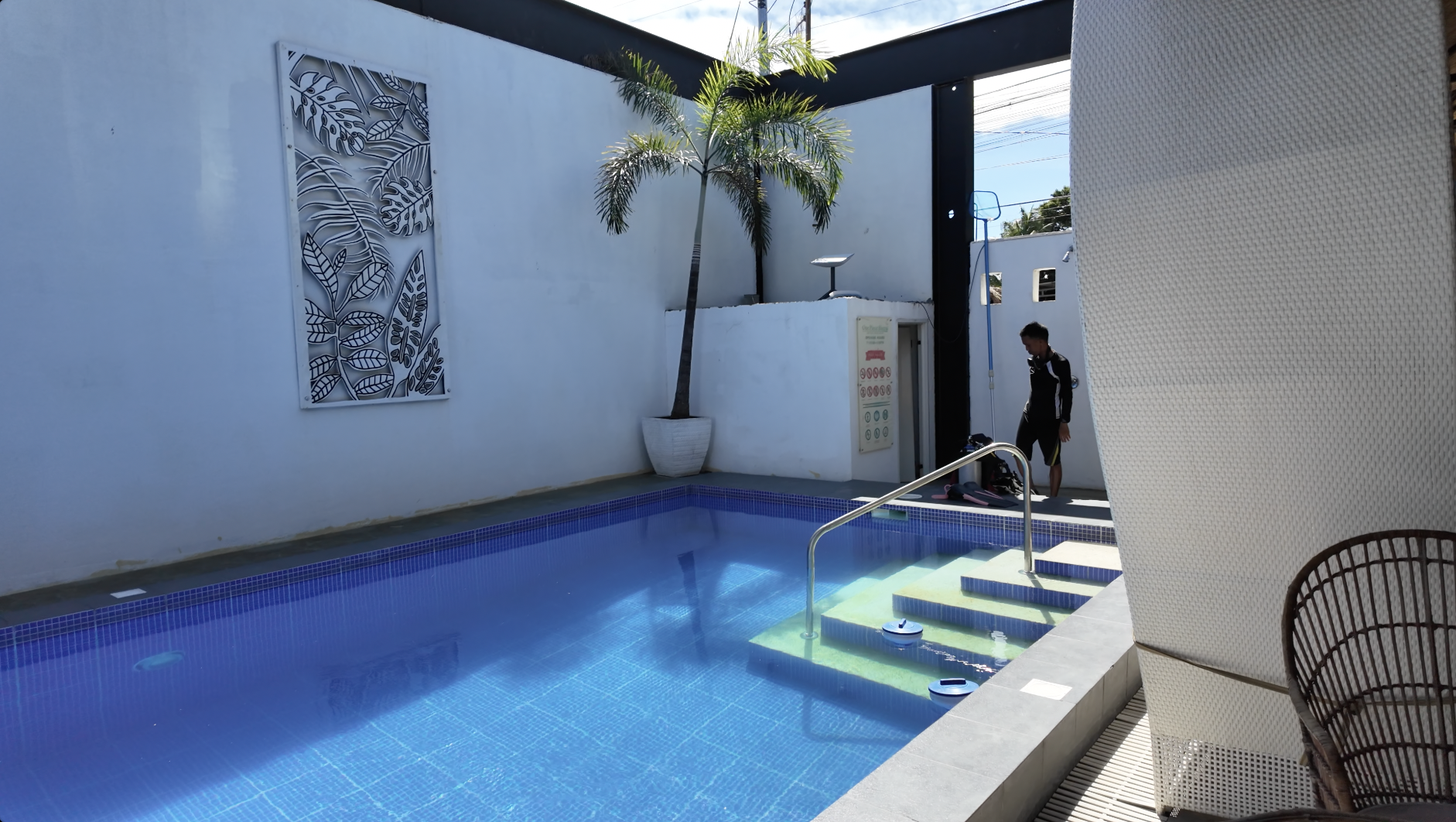
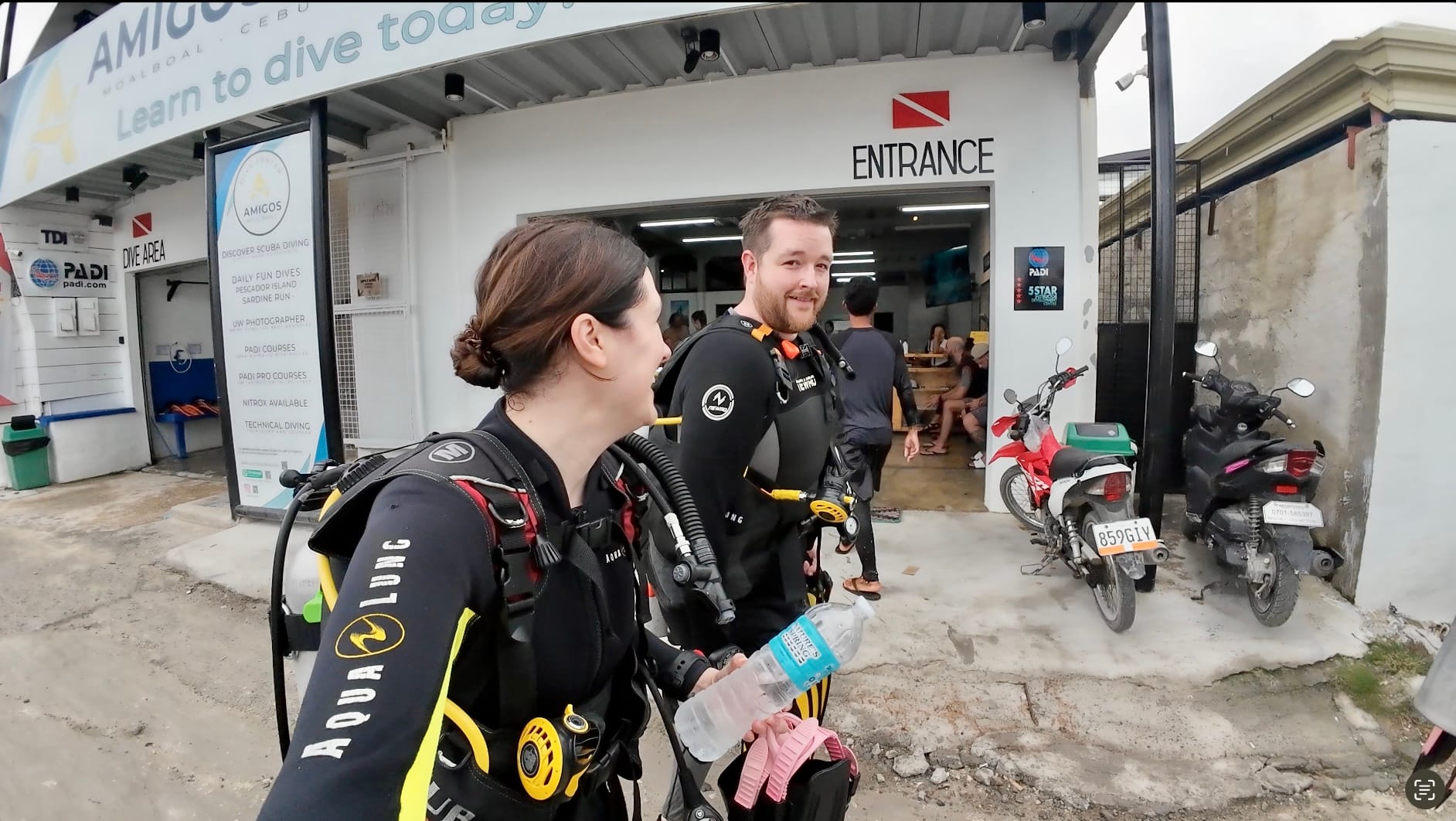
Day 2: First Ocean Dive
The excitement was real on our second day as we prepared for our first ocean dive. With our gear already assembled and stored from the previous day, we quickly made our way to a shallow dive site, about 6–8 feet deep, just off the coast. Here, Markus had us review basic skills, ensuring everyone felt comfortable before descending further.
Over the next hour, we practiced key emergency procedures, including:
- Controlled Emergency Swimming Ascents (CESA)
- Mask removal and replacement
- Regulator retrieval
- Handling simulated no-air situations
After a break for lunch, we embarked on a longer dive. This time, the focus was on exploring the underwater world while refining our technique. Moalboal is famous for its sardine run, and swimming among thousands of shimmering fish was an incredible experience. We also encountered sea turtles gliding through the water and marvelled at the vibrant coral formations. Despite initial apprehensions, Jess was now thoroughly enjoying herself, and I couldn’t get enough of the underwater scenery.
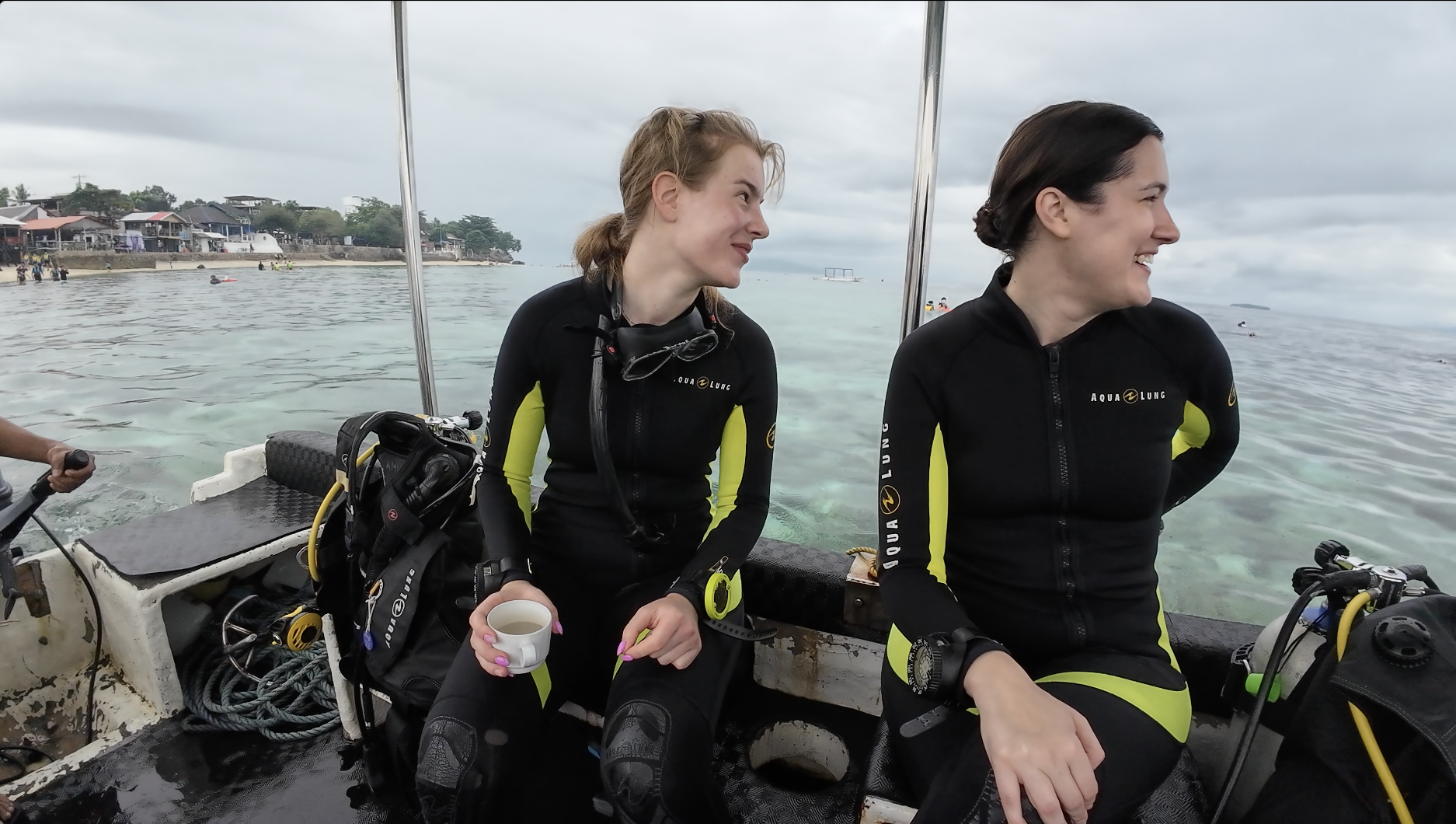
Day 3: Boat and Drift Dives
The final day of training was the most thrilling. We boarded a boat for two drift dives, where the current carried us effortlessly along the ocean floor. These dives were deeper, taking us down to 18 meters, the maximum depth allowed for Open Water divers. Markus emphasized maintaining proper buoyancy and communication as we explored the marine life.
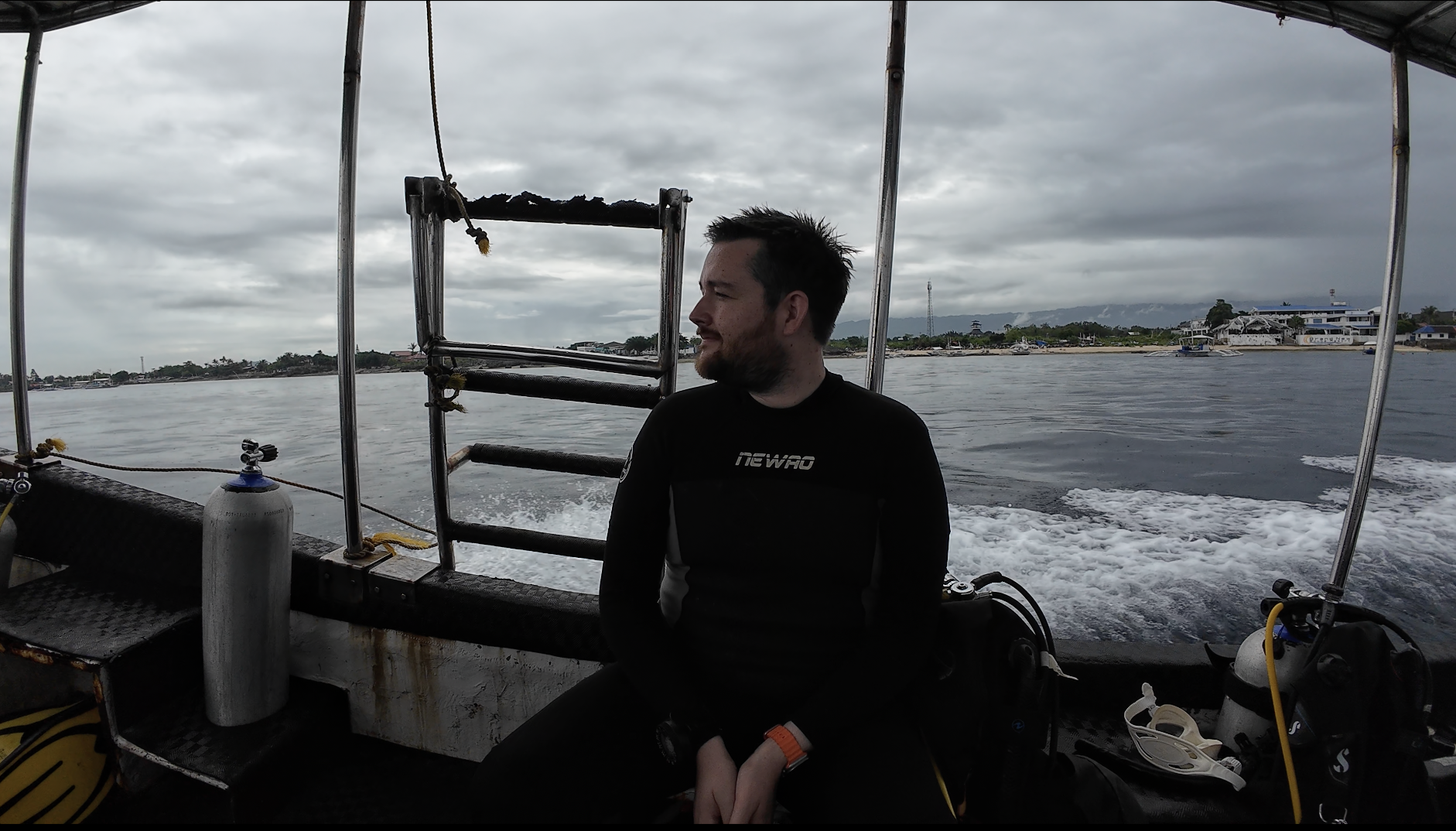
The highlight of the day was the sense of freedom that came with drifting for almost an hour underwater. We encountered even more sea life, schools of fish, and unique underwater formations. By this point, our group moved confidently as a team, and Markus’s watchful eye ensured everyone felt safe and supported.
With no new skills to learn, the focus was entirely on enjoying the experience and honing our technique. It was the perfect culmination of our training, and by the time we surfaced, we all felt a true sense of accomplishment.
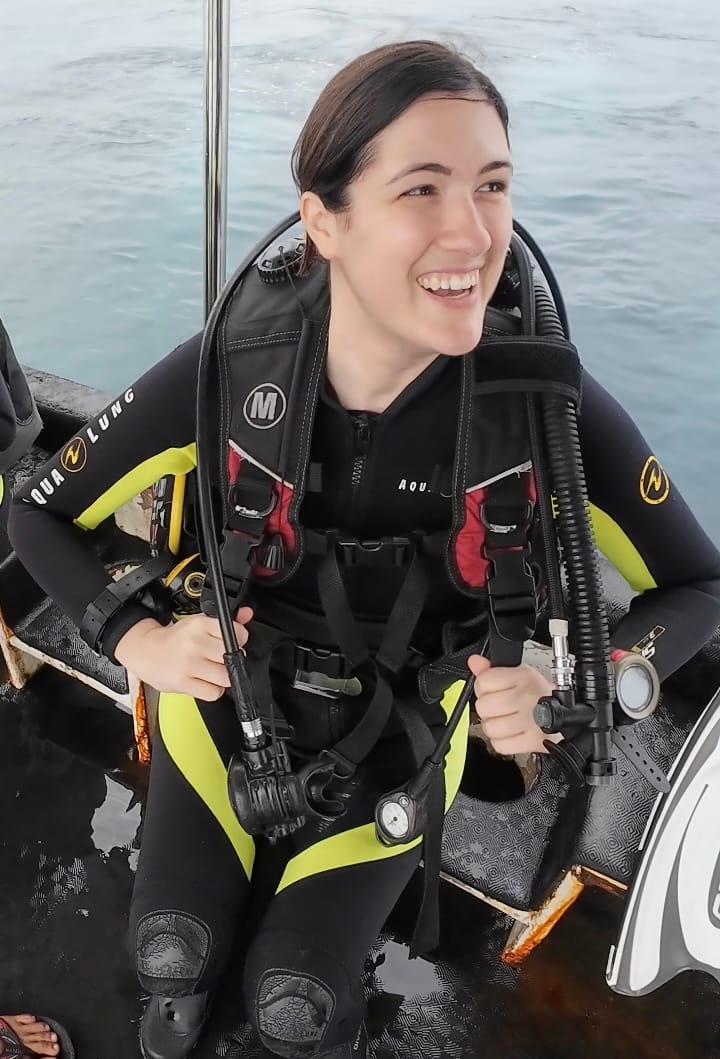
Wrapping Up: Certification and Final Test
That evening, we completed the final online test, an open-book assessment designed to reinforce our knowledge. The hands-on training and e-learning modules had prepared us well, and passing the test was straightforward. The next morning, we received our official online certification as Open Water divers.
Reflections on the course
Completing our Open Water PADI course in Moalboal was one of the most rewarding experiences of our trip thus far. From the meticulous training at Amigos Dive Center to the inspiring underwater landscapes, every moment was unforgettable. Jess overcame her initial nerves and discovered a new passion, while I was captivated by the beauty of the ocean.
For anyone considering getting certified, we can’t recommend Moalboal and Amigos Dive Center enough. The combination of world-class instruction, stunning dive sites, and affordable rates makes it an ideal destination for aspiring divers. Whether you’re a complete beginner or looking to expand your diving skills, Moalboal offers an experience you’ll treasure forever.



Member comments